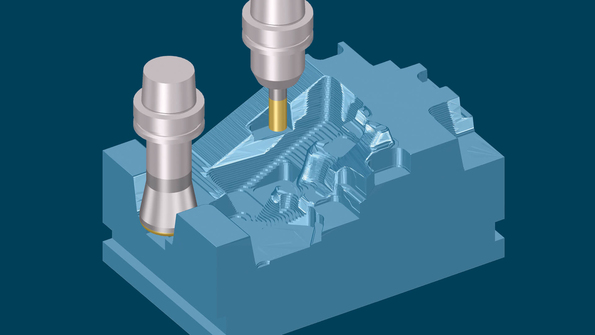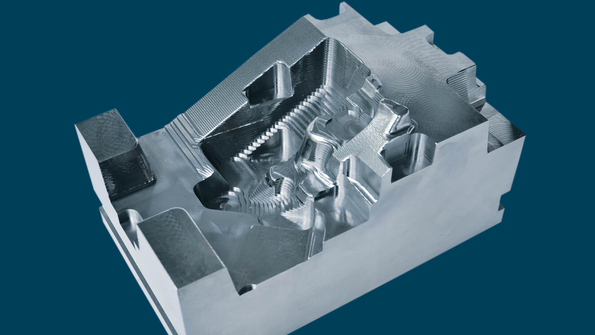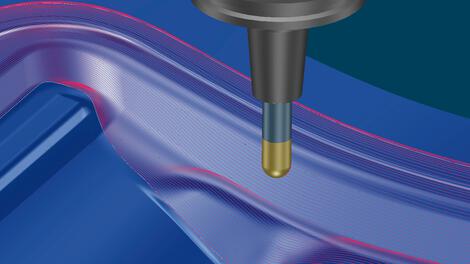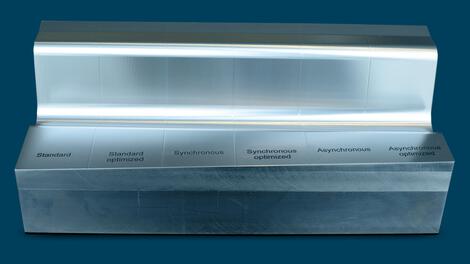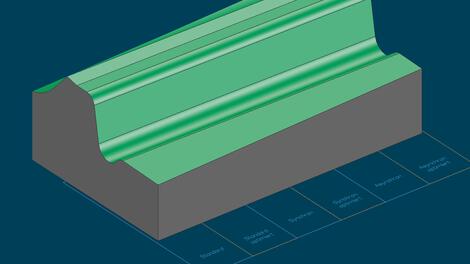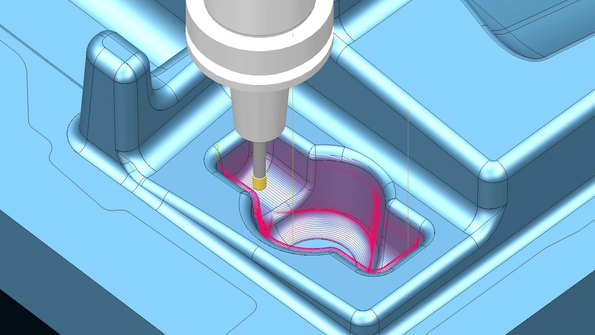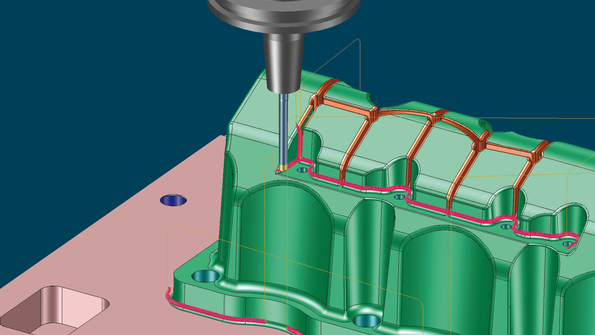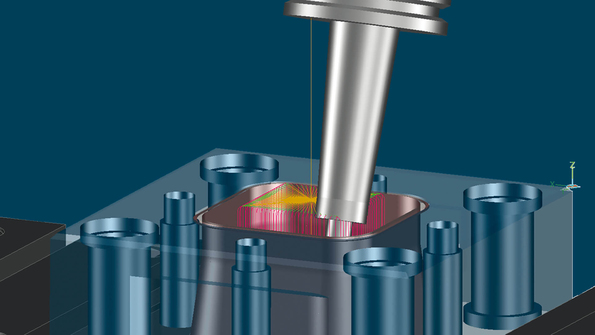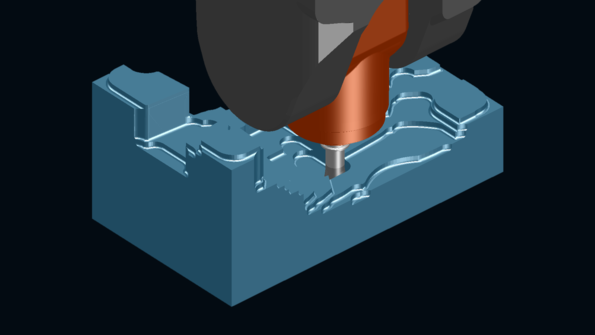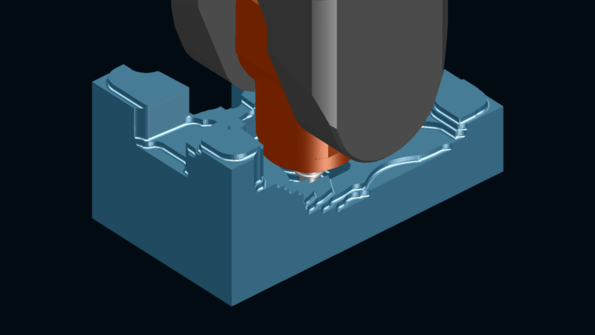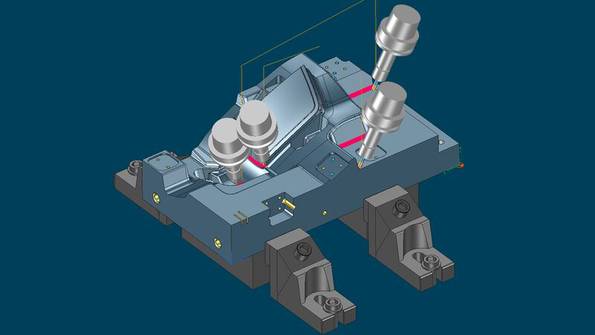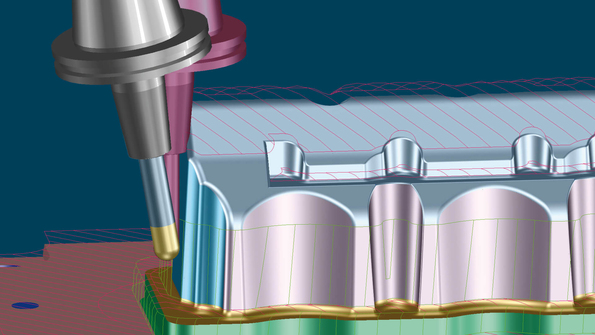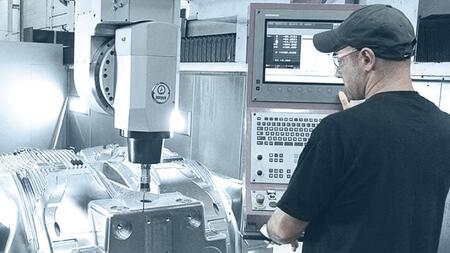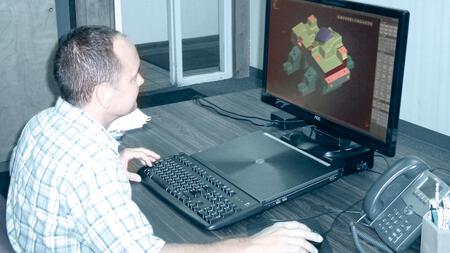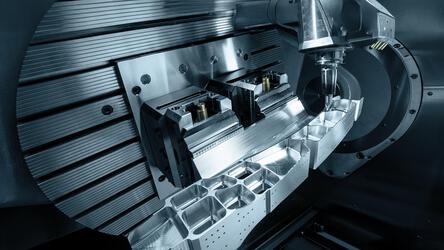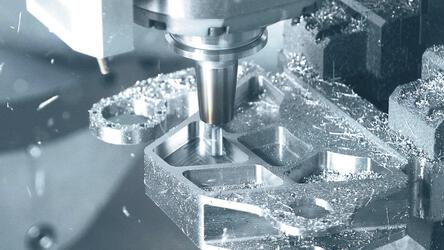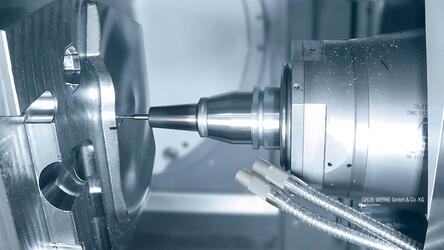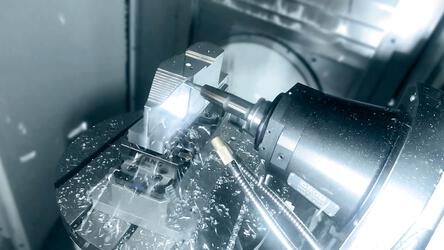3D milling for roughing and finishing
The reliable and efficient path to premium surfaces
The 3D milling strategies can be used to create 3-axis and 3+2-axis NC programs for roughing, finishing, and residual stock machining. You can already prevent collisions during calculation. For example, the tool automatically avoids collisions or reduces areas at risk, depending on the application. In combination with the precise simulation technologies and harmonic slope-adjusted NC paths, optimal traverse paths are generated for the machine axes in 3D milling.
The most important strategies for 3D milling
- Direct 3D milling of surfaces
- End-to-end accounting for blanks
- Roughing in planes, protecting tools
- Automatically roughing planar surfaces
- Equidistant 3D finishing
- Precise residual-stock machining with material tracking
- Part-oriented curve milling
- Height-sorted fillet machining
- Automated machining of ribs and slots
Preventing unnecessary idle travel during roughing
You can define any number of blanks quickly and easily. The material can be machined from different tilt directions, significantly reducing the computational effort. The blank is updated and passed on to the next machining operation – and the update is always performed using the actual cutter geometry. The system safely and reliably mills only where there is remaining material.
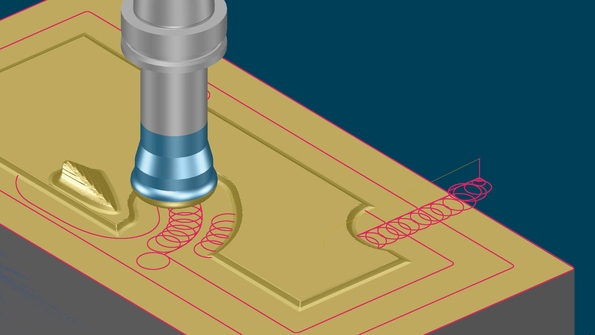
Tebis uses different options for full-cut handling and full-cut avoidance in 3D milling: Depending on the situation, full-cut areas are machined trochoidally, or the path layout is automatically adapted to the geometry without full-cut machining. This is optimal for adaptive roughing with HPC cutters. All path layouts are automatically smoothed, enabling further optimization of the feed rate.
Efficiently machining planar areas with 3D milling
Finishing for best surface quality
Tebis strategies for optimized 3D stepover ensure uniform stepover on the surface in 3D milling of both flat and steep areas. The part is automatically divided into slope areas that can be manufactured with special strategies and tools, providing the best conditions for automated NC programming in conjunction with Tebis template technology.
High-quality toolpaths: HSC point distribution optimally positions the NC points on the surface. You can influence the point distribution so that the output toolpaths precisely match your machine control. An additional benefit: You can directly mill surfaces without needing a faceted substitute model.
Precisely determine milling areas: In Tebis, the contour of the virtual tool matches that of the actual tool used exactly. This lets you use your HFC cutters to their full potential, even for prefinishing.
Path and height-optimized residual stock machining with 3D milling
Depending on the task, special residual stock machining strategies are available for 3D milling, such as for fillets or complex cavities. Path and height-optimized NC programs reduce machine run times. You also benefit from precise calculation of the milling areas in residual stock machining.
Quickly creating collision-checked NC programs
Tebis detects potential collisions automatically during NC calculation. The wide range of collision avoidance solutions are optimized for specific situations.
Area reduction accounting for the real head geometry
In the event of potential collisions with the machine head, milling areas are automatically reduced or excluded from machining. You increase process reliability with 3D milling and use the shortest possible tools for every milling job, ensuring optimal cutting conditions.
The "Program with virtual machine" license also enables interactive rotation of the head or table around the C axis in the machine kinematics. The benefit is especially clear for asymmetrical heads: The maximum possible material is removed with the selected tool. Unnecessary residual stock is avoided. The interactive rotations are immediately accounted for in the area reduction.
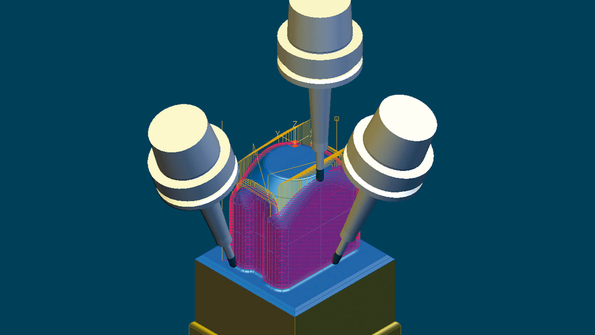
5-axis simultaneous avoidance milling
Collisions of the tool holder with the part in 3+2-axis NC programs can also be avoided with automated 5-axis simultaneous machining. This enables top-quality machining of electrodes or parts with deep cavities using short tools.



